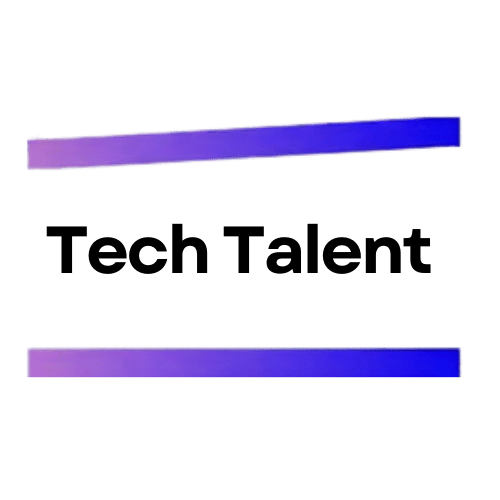In today’s rapidly evolving business landscape, the concepts of “upskilling” and “reskilling” have transcended mere buzzwords to become essential strategies for organizational survival and growth. As we navigate the complexities of hybrid work environments, these approaches are not just trendy corporate jargon but vital tools for unlocking a future where adaptability and continuous learning reign supreme.
The urgency of embracing upskilling and reskilling initiatives stems from the inexorable march of technological progress and the seismic shift towards remote and hybrid work models. These transformations are reshaping the very fabric of our professional lives, demanding a workforce that is not only technologically savvy but also remarkably agile and resilient.
Consider the stark reality painted by recent studies: up to 30% of jobs in the United States could be automated by 2030. However, this same wave of innovation is projected to create approximately 97 million new roles. This dichotomy underscores the critical need for a proactive approach to workforce development. It’s not merely about keeping pace; it’s about staying ahead of the curve and turning potential threats into opportunities for growth and innovation.
For those in learning and development (L&D), the mission is clear and unequivocal: to equip the workforce with the skills and mindset necessary to thrive in a future where change is the only constant. This involves not just imparting technical skills but fostering a culture of perpetual learning and adaptability that can weather any storm of disruption.
Distinguishing Upskilling from Reskilling: A Crucial Differentiation
To effectively bridge the skills gap, it’s imperative to grasp the nuanced difference between upskilling and reskilling. These terms, often used interchangeably, represent distinct approaches to workforce development, each with its own set of objectives and methodologies.
Upskilling is the process of enhancing an individual’s existing skill set, enabling them to advance within their current role or field. It’s about building upon a foundation of knowledge and expertise, adding layers of proficiency that allow employees to take on more complex responsibilities or adapt to new technologies within their existing job functions. For instance, a marketing professional might upskill by learning advanced data analytics to better interpret consumer behavior and optimize campaign performance.
Reskilling, on the other hand, involves training individuals for entirely new roles, often in response to technological advancements or shifts in business strategy. This more comprehensive transformation equips employees with an entirely new set of skills, preparing them for positions that may be far removed from their original area of expertise. A prime example would be a customer service representative transitioning into a data analyst role, requiring a complete overhaul of their skill set.
Understanding this distinction is crucial for organizations as they formulate their workforce development strategies. It allows for a more targeted and efficient approach to addressing skills gaps, ensuring that resources are allocated effectively and that employees are guided along the most appropriate developmental path.
Moreover, recognizing the difference between upskilling and reskilling enables organizations to better align their talent development initiatives with broader business objectives. Upskilling might be the preferred strategy when the goal is to enhance productivity and innovation within existing roles, while reskilling becomes essential when preparing for significant organizational changes or pivoting to new business models.
Implementing Effective Upskilling and Reskilling Strategies
To foster a culture of continuous learning and development, organizations must implement robust and effective upskilling and reskilling strategies. Here’s a comprehensive approach to achieving this:
- Conduct a Thorough Skill Gap Analysis:
- Utilize advanced data analytics and AI insights to identify future-critical skills
- Engage in traditional evaluations to pinpoint areas of improvement
- Involve employees in discussions about their career aspirations to align growth pathways
- Create Personalized Learning Journeys:
- Develop tailored learning paths for each role within the organization
- Incorporate a mix of foundational, intermediate, and advanced courses
- Ensure clear milestones and objectives for each stage of career development
- Empower Employee-Driven Development:
- Provide access to a diverse array of learning resources and tools
- Encourage proactive management of individual learning paths
- Align personal growth initiatives with company strategic goals
- Implement Robust Recognition Systems:
- Offer digital badges and certifications for completed courses
- Create promotion opportunities tied to skill acquisition
- Develop incentive programs to motivate continuous learning
- Continuously Evaluate and Refine:
- Establish regular assessment protocols powered by AI analytics
- Implement feedback mechanisms to gauge program effectiveness
- Remain flexible and responsive to evolving skill requirements
By implementing these strategies, organizations can transform the challenge of a constantly changing work environment into a catalyst for growth, innovation, and competitive advantage. This approach not only prepares the workforce for future challenges but also cultivates a culture of lifelong learning that can adapt to any shift in the business landscape.
Embracing AI as a Catalyst for Learning and Development
In the realm of upskilling and reskilling, Artificial Intelligence (AI) emerges not as a threat to human employment, but as a powerful ally in the quest for continuous learning and development. The integration of AI into learning and development strategies offers unprecedented opportunities to enhance the efficiency, personalization, and impact of training programs.
Personalized Learning Experiences: AI algorithms can analyze individual learning patterns, preferences, and performance data to create highly tailored learning paths. This level of personalization ensures that each employee receives content that is most relevant to their role, learning style, and career aspirations, maximizing engagement and knowledge retention.
Adaptive Learning Systems: AI-powered platforms can adjust in real-time to a learner’s progress, automatically increasing or decreasing the difficulty of content to maintain an optimal challenge level. This dynamic approach keeps learners in their “zone of proximal development,” fostering continuous growth without overwhelming or underwhelming them.
Predictive Analytics for Skill Gaps: By analyzing vast amounts of data on industry trends, job market demands, and internal skill inventories, AI can predict future skill requirements with remarkable accuracy. This foresight allows organizations to proactively develop training programs that address emerging needs before they become critical gaps.
Virtual Mentors and Chatbots: AI-driven virtual assistants can provide 24/7 support to learners, answering questions, offering guidance, and providing instant feedback. These tools can significantly enhance the learning experience by offering immediate assistance and reinforcement.
Enhanced Content Creation: AI tools can assist in the rapid development and curation of learning content, ensuring that training materials remain up-to-date and relevant in fast-evolving fields. This capability is particularly crucial in technical domains where knowledge can become obsolete quickly.
By leveraging AI in these ways, organizations can create more efficient, engaging, and effective learning environments. This not only accelerates the upskilling and reskilling process but also frees up human trainers and mentors to focus on higher-value activities such as complex problem-solving, creative thinking, and emotional intelligence development – areas where human expertise remains irreplaceable.
Cultivating a Resilient Workforce for the Hybrid Era
The advent of hybrid work environments has ushered in a new era of complexity and opportunity in workforce development. This model, where employees split their time between remote and office-based work, demands a unique blend of skills that go beyond mere technical proficiency. To thrive in this new paradigm, organizations must cultivate a workforce that is not only adaptable and resilient but also equipped with a diverse array of soft skills crucial for navigating the nuances of hybrid collaboration.
Fostering Digital Fluency: While technical skills are important, true digital fluency encompasses the ability to seamlessly integrate technology into various aspects of work. This includes proficiency in virtual collaboration tools, digital project management platforms, and the capacity to troubleshoot common tech issues independently. Upskilling initiatives should focus on developing this holistic digital competence, ensuring employees can effortlessly transition between physical and virtual work environments.
Enhancing Communication Skills: The hybrid model amplifies the importance of clear, concise, and effective communication across various mediums. Reskilling programs should emphasize both written and verbal communication skills, with a particular focus on virtual presentation techniques, asynchronous communication strategies, and the art of conveying complex ideas through digital channels.
Cultivating Emotional Intelligence: The reduced face-to-face interaction in hybrid settings makes emotional intelligence more crucial than ever. Upskilling efforts should include modules on empathy, active listening, and reading non-verbal cues in virtual settings. These skills are essential for maintaining team cohesion, resolving conflicts, and fostering a positive work culture in distributed teams.
Developing Self-Management Skills: The autonomy inherent in hybrid work requires employees to excel in self-management. This includes time management, prioritization, and the ability to maintain productivity without constant supervision. Reskilling initiatives should incorporate techniques for setting and achieving goals, managing distractions, and maintaining work-life balance in a blended work environment.
Promoting Adaptability and Resilience: The hybrid workplace is characterized by constant change. Upskilling programs should focus on developing adaptability and resilience, equipping employees with the mental tools to navigate uncertainty, embrace change, and recover quickly from setbacks. This might include training in agile methodologies, scenario planning, and stress management techniques.
By focusing on these areas, organizations can create a workforce that is not only technically proficient but also emotionally intelligent, communicatively adept, and inherently flexible. Such a workforce is better equipped to handle the challenges of hybrid work, drive innovation, and contribute to a positive, productive organizational culture regardless of physical location.
Conclusion: Embracing Continuous Learning as a Competitive Advantage
In the ever-evolving landscape of hybrid work, upskilling and reskilling emerge not just as strategies for survival, but as powerful catalysts for organizational growth and innovation. By embracing these approaches, companies can transform the challenges posed by technological advancement and changing work models into opportunities for unprecedented development and competitive advantage.
The key to success lies in creating a culture of continuous learning that permeates every level of the organization. This involves:
- Leadership Commitment: Executives and managers must champion the cause of ongoing education, leading by example and allocating resources to support comprehensive learning initiatives.
- Integrated Learning Experiences: Blending formal training with on-the-job learning opportunities, mentorship programs, and cross-functional projects to provide a rich, multifaceted learning environment.
- Technology Leverage: Utilizing AI and advanced learning platforms to deliver personalized, adaptive learning experiences that cater to individual needs and learning styles.
- Continuous Assessment and Adaptation: Regularly evaluating the effectiveness of upskilling and reskilling programs, and swiftly adjusting strategies to meet evolving needs.
- Employee Empowerment: Encouraging employees to take ownership of their learning journeys, providing them with the tools and support to drive their own development.
By implementing these strategies, organizations can create a resilient, adaptable workforce capable of navigating the complexities of hybrid work environments. This not only enhances employee satisfaction and retention but also positions the company as an agile, forward-thinking entity ready to seize new opportunities in an increasingly competitive global market.
In conclusion, upskilling and reskilling are not mere responses to change; they are proactive strategies for shaping the future of work. Organizations that embrace this philosophy of continuous learning will find themselves not just surviving but thriving in the era of hybrid work, setting new standards for innovation, productivity, and employee engagement. The journey of learning never ends – it evolves, adapts, and opens doors to possibilities we have yet to imagine.

Explore TechTalent: Elevate Your Tech Career
Certify Skills, Connect Globally
TechTalent certifies your technical skills, making them recognized and valuable worldwide.
Boost Your Career Progression
Join our certified talent pool to attract top startups and corporations looking for skilled tech professionals.
Participate in Impactful Hackathons
Engage in hackathons that tackle real-world challenges and enhance your coding expertise.
Access High-Demand Tech Roles
Use TechTalent to connect with lucrative tech positions and unlock new career opportunities.
Visit TechTalent Now!
Explore how TechTalent can certify your skills and advance your tech career!
